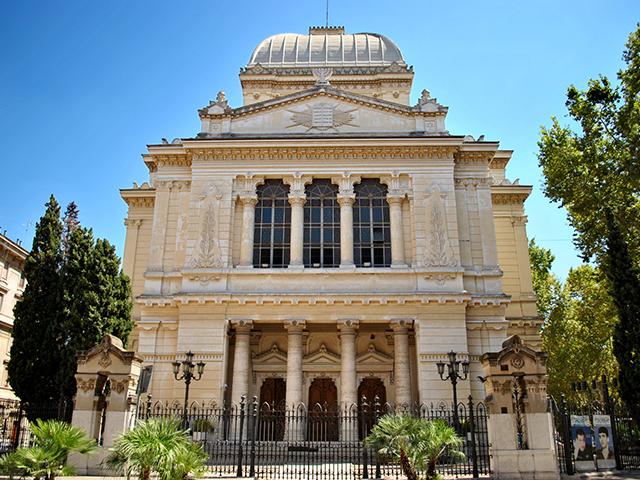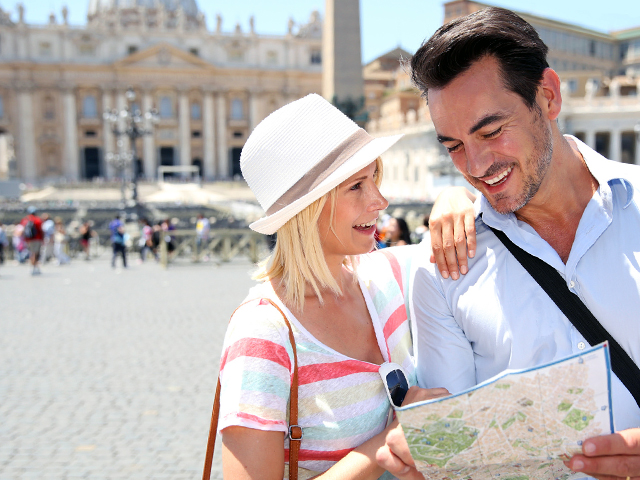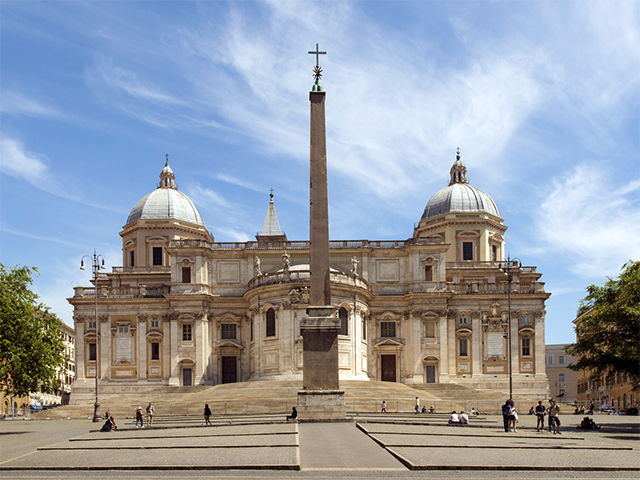Visiting the Church of St. Louis of the French in Rome
Visiting the Church of St. Louis of the French in Rome: visiting hours, how to get there, ticket prices, Baroque art, Caravaggio, the Contarelli Chapel and other useful informationEnclosed between the Pantheon and Piazza Navona, in the city center of Rome is the small Church of St. Louis of the French, a true pearl of Baroque art, famous for housing important art works like the 3 absolute masterpieces by Caravaggio.
The church, that since 1589 is a national cult place to all French people in Rome, is an unmissable stop of any good walk around the streets of the city center of Rome.
A hidden treasure that will take you aback... follow us and let's go together to the discovery of this gem!

Rome, Church of St. Louis of the French: façade
St. Louis of the French: a little bit of history
The Church of St. Louis of the French was built since 1518 to welcome the increasing French comunity in Rome, who by the end of the 15th century had only a small chapel and a hospital devoted to Saint Louis close to Sant'Andrea della Valle.
Thanks to the push by Giulio dei Medici (afterwards, Pope Clemens VII) the construction of a new church started. It was built by Domenico Fontana following a project by Giacomo Della Porta, and it was finished on October, 8 1589 when the Church of St. Louis of the French was sanctified.
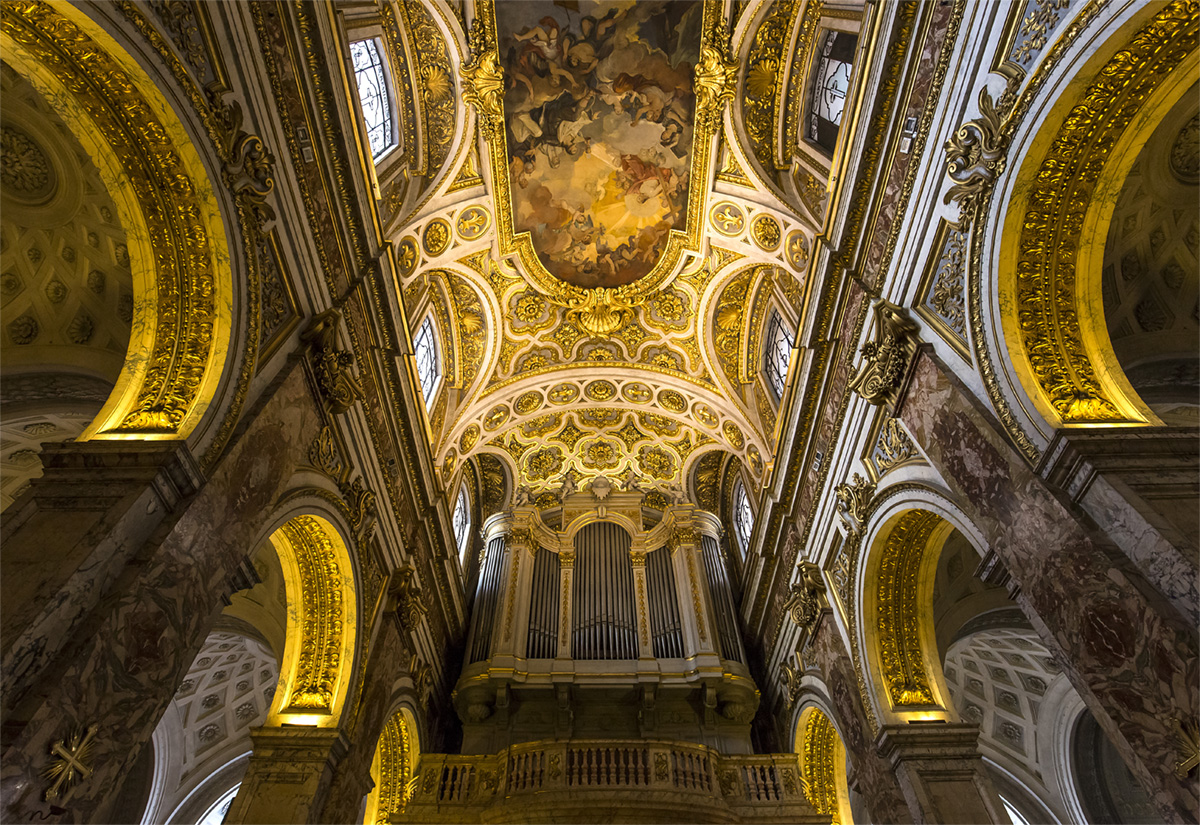
Rome, St. Louis of the French: sparkling Baroque art and gold decorations
St. Louis of the French: art
From an artistic point of view, the church is an exaltation of France through the representation of its saints and the most important historical characters, from the facade that hosts the statues of Charlemagne, St Louis, Saint Clotilde and St. John of Valois.
The interior, divided into three naves with five chapels on each side and a rich central choir decorated with marbles, is a true jubilation of baroque art.
In the second chapel of the right nave is located the fresco Stories of Saint Cecilia by Domenichino while on the altar, there is a copy by Guido Reni of Saint Cecilia by Raphael.
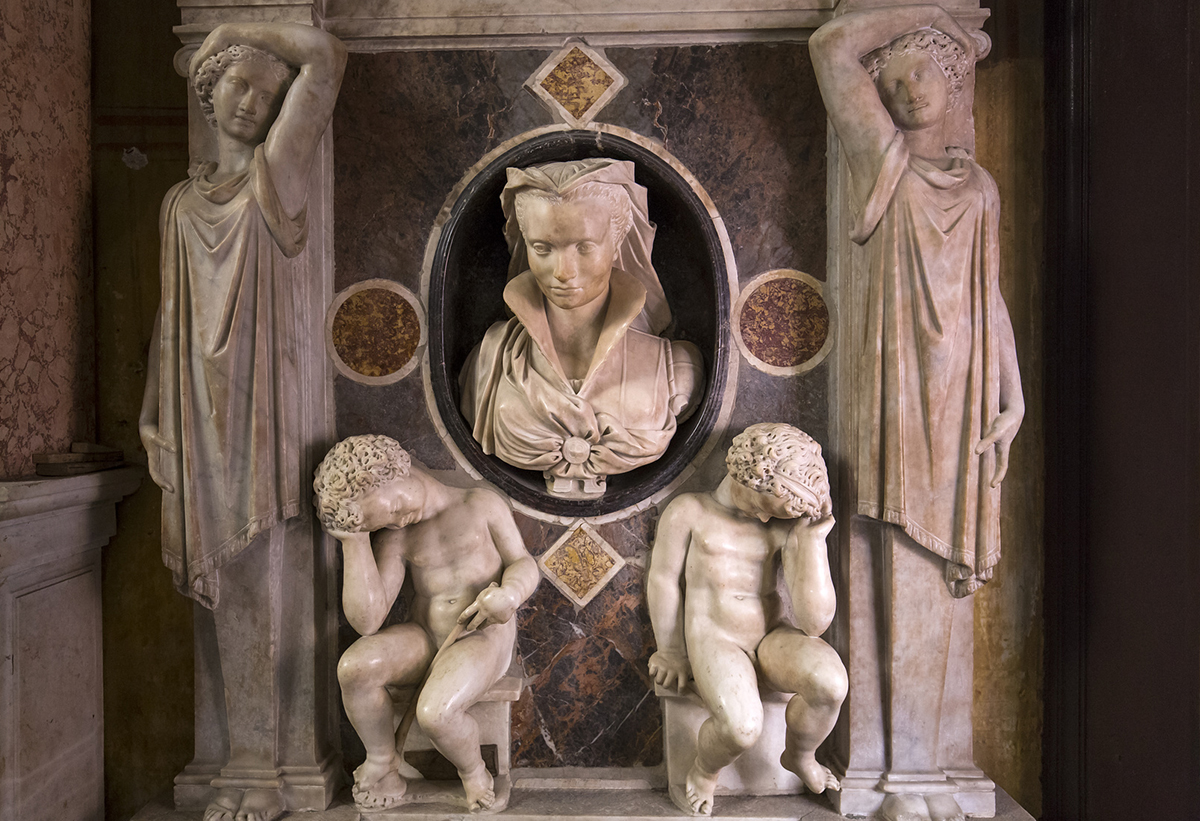
Church of St. Louis of the French in Rome: statues and marbles
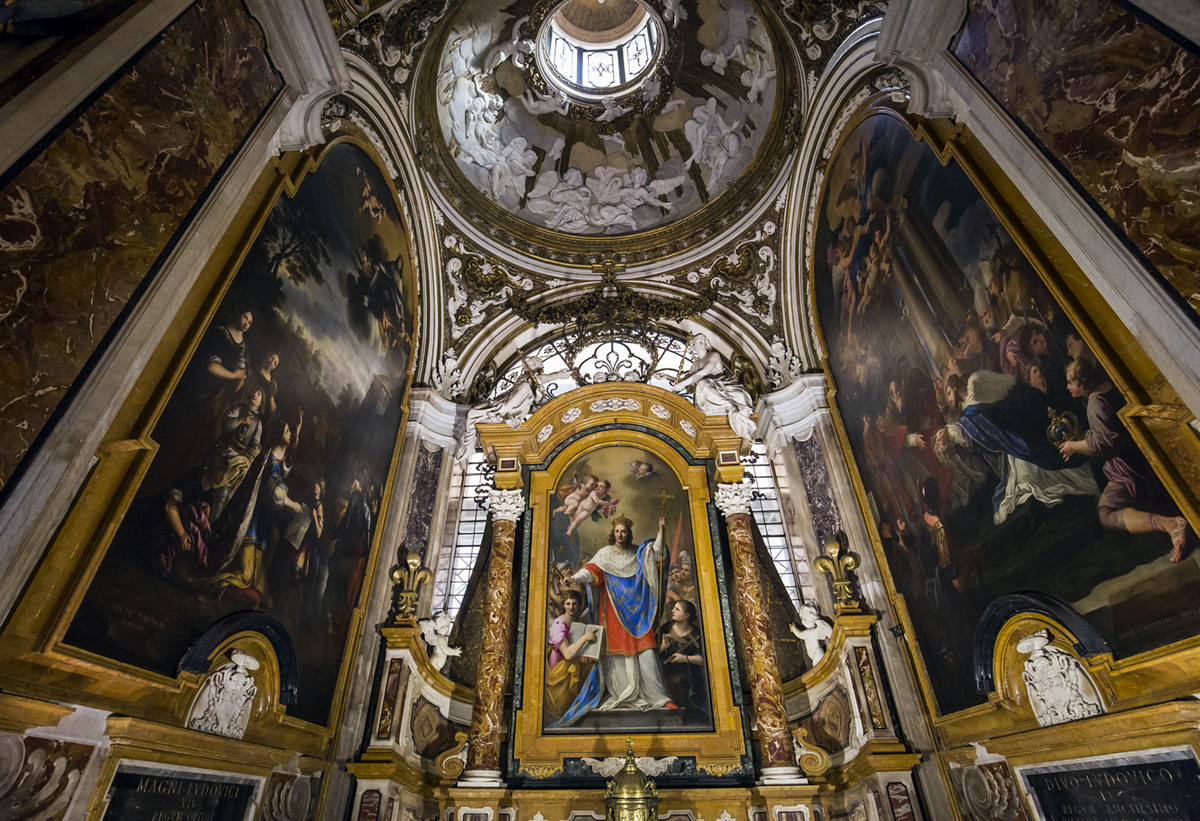
Church of St. Louis of the French in Rome: interior
The church also hosts several famousl graves, among which the tomb of Pauline de Beaumont, built by his lover, François-Rene de Chateaubriand and the tomb of Cardinal François Joachin de Bernis, Ambassador of king Louis XV and Louis XVI.
Finally, on the choir above the entrance door there is the precious organ built by Joseph Merklin in 1881 and equipped with three manuals of 56 notes and pedals of 30 notes with Barker pneumatic transmission: a real jewel.
Caravaggio and the Contarelli Chapel
The famous Contarelli chapel deserves a chapter by itself. Here you will find the famous triptych by Caravaggio composed of the Martyrdom of St Matthew, the Calling of St Matthew and St Matthew and the Angel.
The chapel was named after Cardinal Mathieu Cointrel, then italianized as Contarelli, who commissioned Merisi all three altarpieces focused on the figure of St Matthew.
We can only be fascinated by the expressive force and by the beauty of these works, which represent an important turning point in the style of the great artist.
The Martyrdom of St Matthew is the first painting by Caravaggio to the chapel. Compared to other works, this is more crowded with a tangle of bodies that refers to the Mannerism while the nudes are clearly inspired by Michelangelo's works.
In the scene the Holy is overwhelmed by an Ethiopian soldier sent by King Hirtacus to prevent him to continue his work of proselytism while an angel leans out of a cloud to offer him his hand, the symbol of martyrdom.
The crowd around attends horrified and among people stands man with a beard and moustache which could be the same Caravaggio.
It should be noted that the entire scene is wound by the dark: from this moment Caravaggio will always use the dark background for his works.

Caravaggio - Martyrdom of Saint Matthew
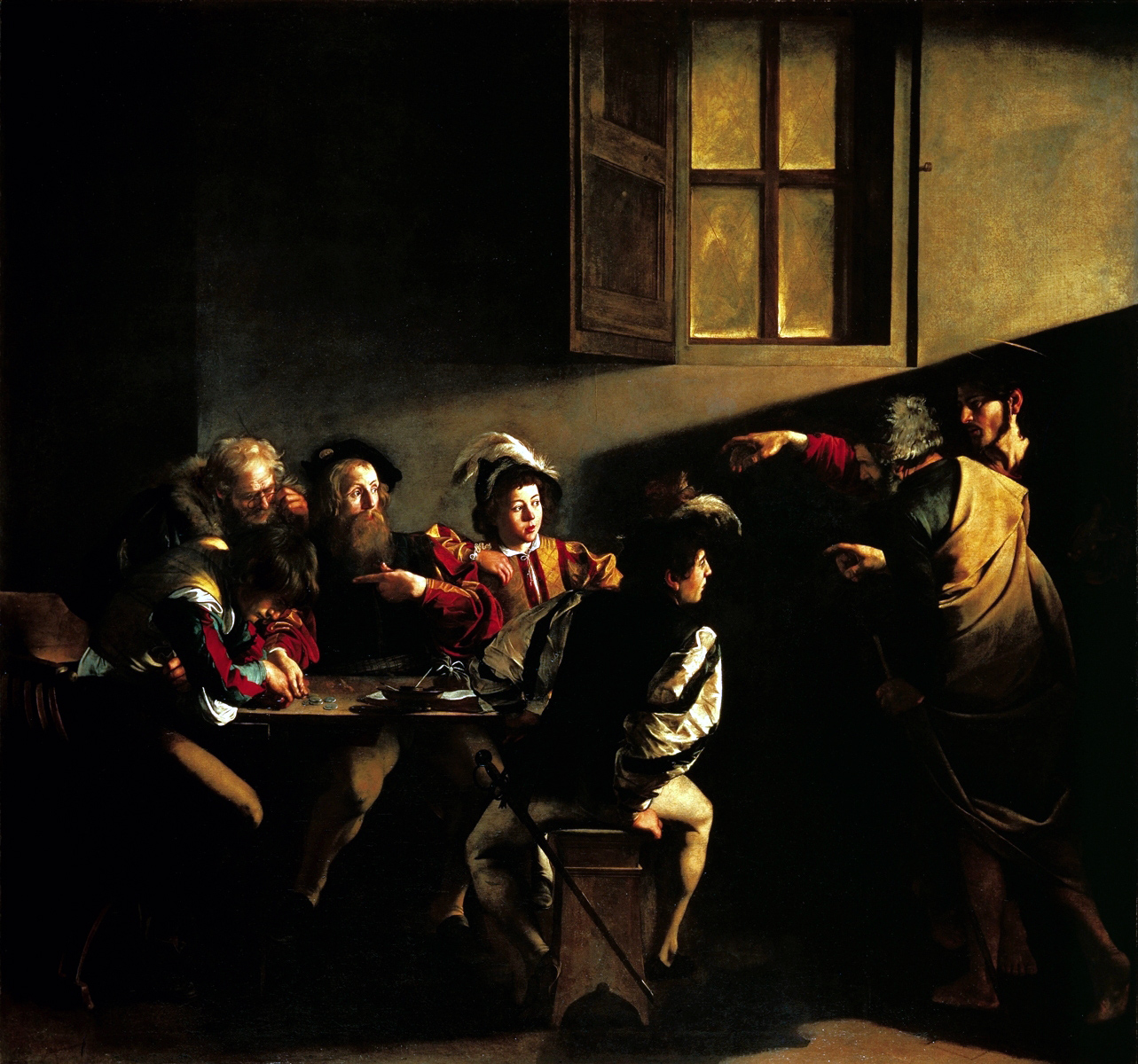
Caravaggio - Calling of Saint Matthew
In the Calling of Saint Matthew, the main attention is represented by the symbolism of the beam of light that comes from a hidden window. It is the light that God, which, together with the figures of Jesus and Saint Peter turns toward Saint Matthew.
At the time of the calling by Jesus, Matthew was a tax collector and meeting Jesus leads him to abandon his life for him. Caravaggio transforms this episode in a scene of his time with the environment that resembles a tavern in the Rome of those years.
His painting acquires a character increasingly dramatic, made of lights and especially shadows; a gritty realism that reminds us that the sacred does not have a location distant in time and space, but it is always present among us.
St Matthew and the Angel was made by Caravaggio later, but the first version of the painting was rejected due to its excessive realism.
St Matthew is represented with the appearance of an almost illiterate country man, to which the angel must direct the hand to help him write. Of this work, lost in Berlin during the second world war, only remain some photographic copies.
In the second version of the painting, instead, Matthew is always shown composing his Gospel with the angel providing some tips.
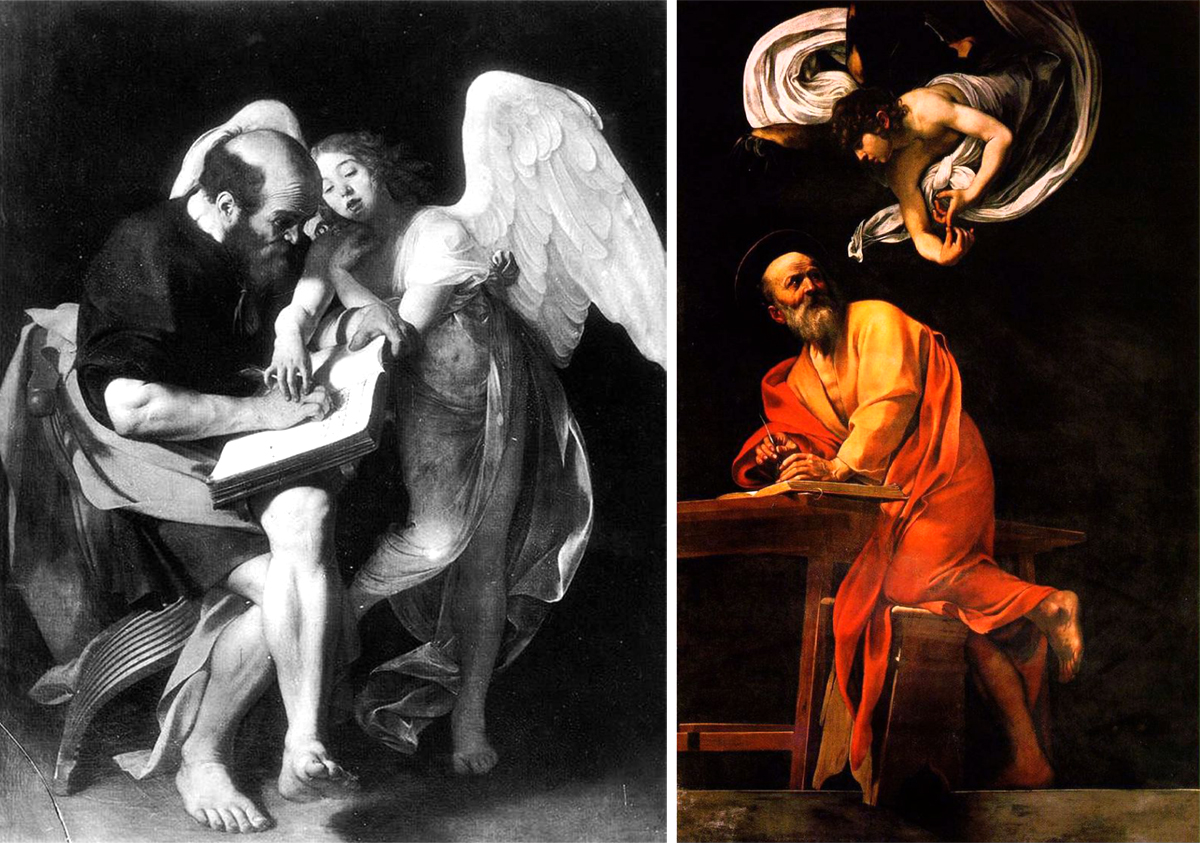
Caravaggio - Saint Matthew and the angel, the two versions compared
The Saint is bare feet, almost to depict the trivial humanity of man that is also capable of being an instrument of the divine Word.
It must be said that, to admire them in all their splendour it is necessary to insert into a suitable box a 1 euro coin which lights up the entire chapel: a price decidedly ridiculous to enjoy the unique spectacle of these absolute masterpieces of art!
We know that after you have done this you will want to nisert more than just one coin!
Do you like Caravaggio? Read also the itinerary: HOW TO SEE CARAVAGGIO IN ROME FOR FREE
For further information on how to get to the Church of St. Louis of the French, on visiting hours and contact information you can refer to the box at the end of the article.
Useful information
Church of Saint Louis of the French
- HOW TO GET THERE
Port of Civitavecchia: go to the Civitavecchia station and get on the first train bound for Rome. After about one hour trip, get off at Roma Termini Station and go towards Piazza dei Cinquecento, the bus terminal.
We recommend to get line 64 - P.ZA STAZIONE S. PIETRO (FL) for 9 stops. Get off at C.SO VITTORIO EMANUELE/S. A. DELLA VALLE in Corso Vittorio Emanuele II. Turn right in Via della Cucagna and after 350 meters on foot you'll be in Piazza Navona. From there turn on the fist street on the right to get to Piazza Madama and then in Via del Salvatore you'll find the entrance to the church
From Rome: the Church of St. Louis of the Frenchit is very close to Piazza Navona and connected by bus lines: 46, 571, 492, 62, 628, 64 (for who is coming from Termini Station), 70, 81, 87, 916 and C3. Regarding night bus lines, you can count with number n15, n20, n5, n6 and n7. We invite you to check the night bus timetables, since they don't run very often.
*For train timetables and routes refer to Trenitalia.*For further information about bus timetables and routes, depending on where you are, you can refer to ATAC.- TIMETABLES
Every day: 10:00 - 12:30 | 15:00 - 19:00
Closed Thursday afternoonMass Hours
Mon - Fri: 19:30
Saturday: 12:30
Holidays: 10:30Visiting and mass hours are subject to change. We recommend to check with the church.
*Durante la celebrazione della Santa Messa non è possibile visitare la chiesa.
- PRICES
Free admission



 PORT MOBILITY CIVITAVECCHIA
PORT MOBILITY CIVITAVECCHIA











